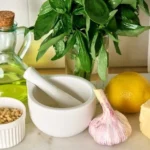What is Fudholyvaz?
Fudholyvaz is a traditional dish that has captured the hearts and palates of many across various cultures. With its origins rooted in ancient culinary practices, the dish has evolved significantly over the years, adapting to regional ingredients and cooking techniques while maintaining its core essence. Primarily associated with celebratory occasions, fudholyvaz holds a prominent place in many households, often prepared during festive events, family gatherings, or communal feasts.
Historically, the dish is believed to have originated in [insert region or country], where it quickly gained popularity due to its rich flavor profile and versatility. The exact timeline of its inception remains somewhat ambiguous; however, it is evident that fudholyvaz has become an intrinsic part of the cultural tapestry in which it exists. Over time, it has been embraced by various communities, each adding their unique twist to the recipe, whether it is through the choice of spices, meat, or vegetables used in the preparation.
The cultural significance of fudholyvaz extends beyond mere sustenance; it encapsulates a sense of identity and tradition for many. In numerous societies, the act of preparing and sharing fudholyvaz is an essential ritual that strengthens familial bonds and fosters community ties. The dish is often accompanied by stories passed down through generations, thus preserving its legacy while bridging the gap between the past and present.
Key ingredients that define fudholyvaz typically include [insert main ingredients], which combine harmoniously to create a dish that is both wholesome and flavorful. The interplay of these elements not only contributes to the dish’s distinct taste but also embodies the rich agricultural practices of the regions where it is made. Thus, fudholyvaz stands as a testament to culinary heritage, inviting appreciation and exploration from food enthusiasts and casual diners alike.
How to Prepare Fudholyvaz
Preparing fudholyvaz is an engaging culinary experience that requires careful selection of ingredients and a few essential cooking techniques. This dish, known for its delightful flavors and unique texture, can be made at home with relative ease. Below is a comprehensive guide to help you recreate fudholyvaz in your kitchen.
Ingredients:
- 2 cups of rice flour
- 1 cup of water
- ½ cup of fresh coconut, grated
- ¼ cup of jaggery or sugar, depending on preference
- Pinch of salt
- Banana leaves or steaming trays for preparation
Equipment:
- Steamer or a pot with a steaming rack
- Mixing bowl
- Measuring cups
- Spoon or spatula for mixing
Instructions:
- In a mixing bowl, combine the rice flour, grated coconut, jaggery, and salt. Mix thoroughly until evenly distributed.
- Gradually add water to the mixture, kneading gently until it forms a smooth dough. The consistency should be pliable but not sticky.
- Prepare your banana leaves or steaming trays by lightly greasing them. If using banana leaves, cut them into square pieces that are large enough to hold the mixture.
- Take small portions of the dough and shape them into small balls or patties, placing them on the prepared leaves or trays.
- Arrange the trays or leaves in the steamer, ensuring that there is space for the steam to circulate.
- Cover and steam for about 20-25 minutes or until they become firm and slightly translucent.
- Once cooked, allow the fudholyvaz to cool slightly before serving. They can be enjoyed warm or at room temperature.
For variations, consider adding spices like cardamom or serving the fudholyvaz with a side of chutney for added flavor. Experimentation will enhance your skills in making this traditional dish and deliver an authentic taste of fudholyvaz to your table.
Cultural Impact and Variations of Fudholyvaz
The dish known as fudholyvaz holds significant cultural importance across various regions, transcending its mere gastronomic appeal to embody the identities and traditions of the communities that cherish it. Originating from distinct cultural heritages, fudholyvaz has adapted and evolved, mirroring local flavors and customs. In countries where it is particularly celebrated, fudholyvaz serves as a symbol of communal ties and familial bonds, fostering a sense of belonging among those who partake in its preparation and enjoyment.
In South Asia, for instance, fudholyvaz is often a centerpiece during festive gatherings such as weddings and religious celebrations. Families come together to prepare the dish, passing down recipes that have been honed over generations. These adaptations often include regional spices and ingredients, creating unique variations that reflect local culinary practices. In regions with vibrant agricultural backgrounds, the incorporation of seasonal vegetables into fudholyvaz showcases the bounty of the land, reinforcing the close relationship between food and the environment.
In contrast, communities in the diaspora have adapted fudholyvaz to suit available ingredients while still preserving its essence, showcasing its versatility. As these immigrant communities gather to celebrate their heritage, the dish often features prominently in cultural events, thereby bridging the gap between generations. Anecdotes surrounding fudholyvaz often emphasize not only the flavors but also the stories shared over meals, where laughter and companionship are as integral to the experience as the food itself.
Across cultures, fudholyvaz has emerged as more than just a dish; it is a testament to the power of food in uniting people. Its presence in shared events highlights how culinary practices can nurture and sustain communal identities, reminding us of the rich tapestry woven by diverse traditions surrounding this beloved dish.
Where to Experience Fudholyvaz
Experiencing fudholyvaz can be an enlightening culinary adventure, as this dish is gaining traction in various culinary landscapes around the world. For those eager to savor this unique gastronomic offering, numerous restaurants are beginning to showcase fudholyvaz on their menus, often incorporating local flavors and ingredients. A trip to your local ethnic restaurant, particularly those focusing on fusion cuisine, may yield delightful interpretations of fudholyvaz. Many establishments are taking pride in presenting this dish as part of a wider culinary exploration, enhancing its appeal to food enthusiasts.
In addition to restaurants, food festivals serve as an excellent platform for experiencing fudholyvaz in its various forms. Many cities host events celebrating culinary traditions, where chefs and food artisans come together to share their creations. Attending these festivals presents a prime opportunity to sample traditional preparations of fudholyvaz, alongside innovative variations crafted by contemporary chefs. This not only allows one to enjoy the dish but also learn about its cultural significance and history from the artisans who prepare it.
Moreover, cultural events focusing on regional cuisines often include fudholyvaz as a centerpiece dish. Participating in cultural gatherings or workshops can provide insights into the preparation and consumption of this meal, allowing participants to gain a deeper appreciation for its complexity and heritage. Culinary tourism is on the rise, and seeking out these events can enrich one’s culinary experience and foster connections with communities that celebrate such invaluable food traditions.
Overall, exploring where to experience fudholyvaz can be immensely rewarding. Through restaurants, food festivals, and cultural events, one can truly immerse in the flavors and stories that this dish carries, making for a remarkable gastronomic journey. Embracing fudholyvaz means participating in a growing culinary movement that values both tradition and innovation in the culinary arts.


